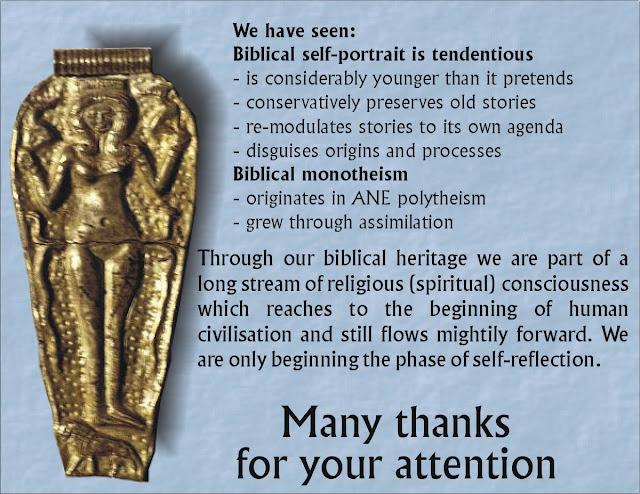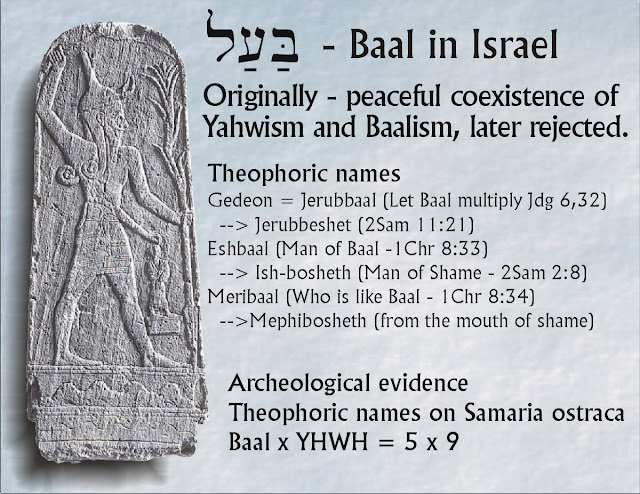Parade of biblical divinities
 |
| From extra-biblical sources we know El’s function and characteristics. |
 | |||
| These two slides outline the Biblical presence of a
well-known Semitic deity of disasters/war and plague, the god Resheph.
The existence of this deity is hidden by presenting him as a simple
appellative (disease/plague). Resheph often appears with his retinue of
demons and other malevolent gods. Almost ironical is an impressive
appearance of these divine “nasties” malevolent deities and demons in
the curse in Deuteronomy (while Deuteronomy is normally considered to be
a guardian of biblical orthodoxy :-) (Comment from September 2018) Recently I also wrote about this god appearing in the Hebrew love poetry (Song of Songs) in the article "Ferocious love" |
 |
| And finally an religious/philosophical apothegm - the development of monotheism did not come without serious cost. Polytheism, for instance, has neater and simpler way of explaining the presence of evil and suffering in the world (malevolent deities, conflicts between gods, siding with the wrong deities), while dogmatic monotheism always struggles with a quandary of theodicy. Monotheism also brought a new secular epistemology. Ancient polytheistic deities shared what I would call metaphoric attributions. We can observe it in our constant difficulties distinguishing between appellative names and proper divine names. The original speakers/thinkers almost certainly did not see it as a problem. For them it was the main feature and the main advantage of their language and thinking about the world. The very reality of their world was divine by the semantic definition of their own words. They were immersed in the divine. They clearly did not want to distinguish, for instance, between Shalem as an evening star, the divinity Shalem, and the idea of divine peace and harmony. For them it was just one reality. They cherished this possibility of speaking about all these concepts while using just one undivided word. They lived out a completely different gnoseological(epistemological) paradigm. As soon as Shalem became a spectrum (divinity-planet-peace) the paradigm got more and more dislocated. When these individual aspects got fully separated with some aspects carved out for God, some suppressed and some secularized, the whole epistemological paradigm got irreparably broken. Mythical epistemology was on its way out. For centuries and millennia the divine and the world became separated. |












2 comments:
This is helpful! Thank you!
Post a Comment